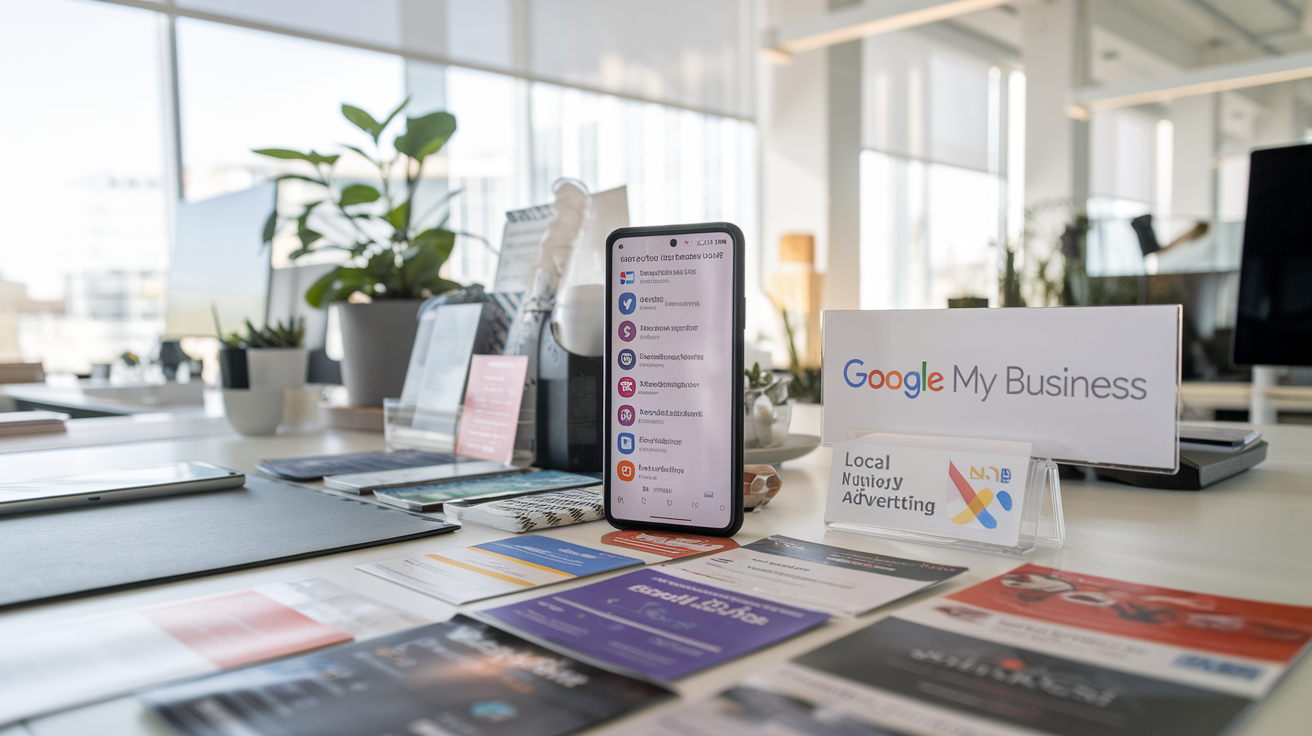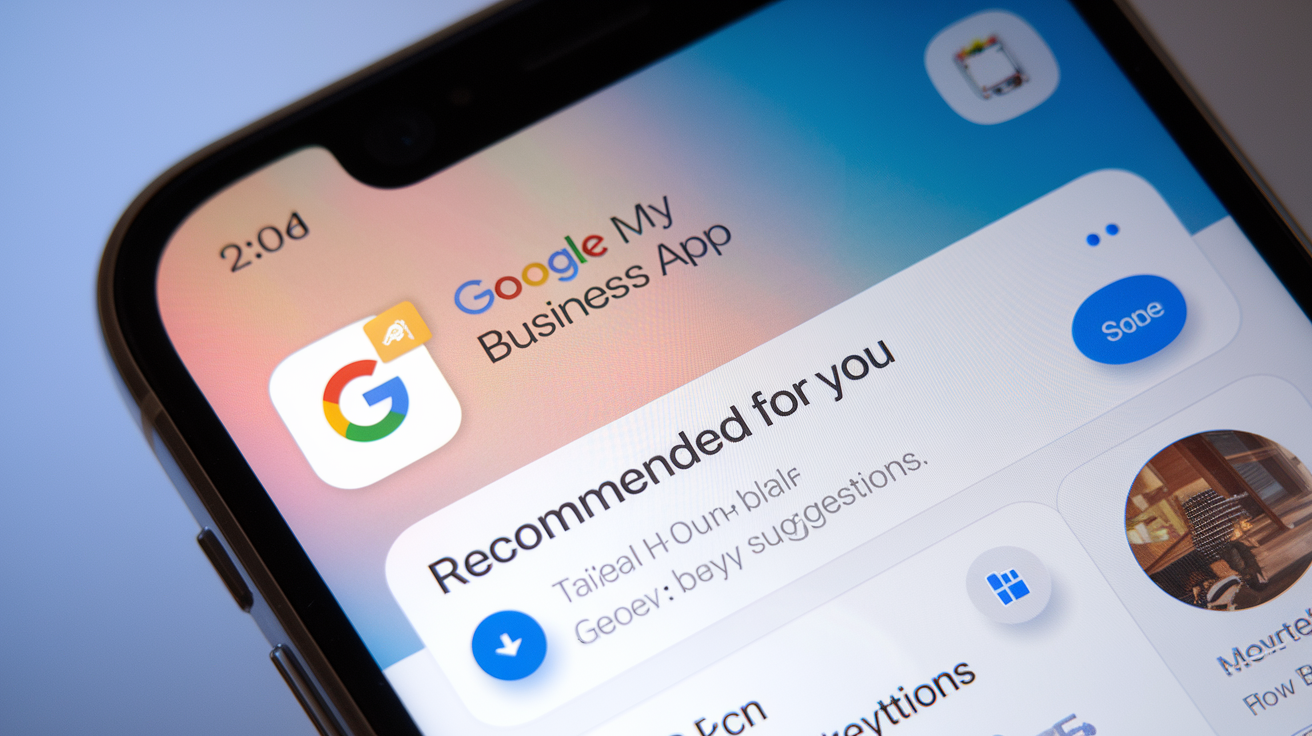
Is your business stuck in 2025 while your competitors are crushing it online? Here’s a scary stat: 87% of consumers now read online reviews for local businesses, but only 23% of small businesses fully optimize their Google My Business profile.
Listen, getting Google My Business right in 2025 isn’t optional anymore. It’s the difference between being found or forgotten.
I’ve helped over 200 local businesses dominate their Google My Business listings, and I’m about to show you exactly how to use Google My Business to market your business effectively with the latest features Google quietly rolled out last quarter.
The strategies I’m sharing aren’t the obvious ones you’ve already tried. In fact, the third technique is something almost nobody is doing yet—but the businesses that are? They’re seeing 3x more customer actions.
How to promote your business on Google
Create and verify your Google Business Profile
Google Business Profile (GBP) is your business’s command center on Google. It’s how you show up when people search for you or businesses like yours on Google Search and Maps.
Setting up your profile is pretty straightforward:
Go to business.google.com and sign in with your Google account
Enter your business name
Add your business category
Include your physical location (or service areas if you don’t have a storefront)
Add contact details including phone number and website URL
Verify your business (usually through mail, phone, or email)
Verification is crucial – it tells Google your business is legit. Once verified, fill out every single section of your profile. Add business hours, services, products, attributes, and tons of high-quality photos.
What really moves the needle? Reviews. Ask happy customers to leave feedback, and always respond to reviews – good or bad. Google notices businesses that actively manage their profiles.
Get a website
In 2025, having no website is like having no business card in the 90s. Your website is your 24/7 digital storefront.
If you’re starting from scratch, platforms like WordPress, Wix, or Squarespace make it doable even if you’re not tech-savvy.
Your website should include:
Clear description of services/products
Contact information (visible on every page)
About page that tells your story
Customer testimonials
High-quality images
Mobile responsiveness (non-negotiable)
Make sure your Google Business Profile links directly to your website, and vice versa. This cross-connection strengthens your digital presence.
Implement search engine optimization
SEO isn’t optional anymore – it’s how customers find you before they know you exist.
Start with these basics:
Research keywords your customers actually use
Optimize page titles and meta descriptions
Create unique, helpful content around those keywords
Ensure your site loads quickly (under 3 seconds)
Make sure your site works perfectly on mobile
Local SEO deserves special attention:
Include your city/region in page titles
Create location-specific pages if you serve multiple areas
Get listed in local directories
Build local backlinks from community organizations
Google’s algorithm loves relevant, helpful content that answers people’s questions. Create content that solves problems your customers actually have.
Create a business blog
A blog isn’t just nice to have – it’s a powerful business tool. Fresh content tells Google your site is active and relevant.
Your blog posts should:
Address common customer questions
Showcase your expertise
Provide genuine value (not just sales pitches)
Include relevant keywords naturally
Feature images and videos were helpful
Topics to consider:
How-to guides related to your industry
Expert opinions on industry trends
Case studies of successful projects
FAQs about your products/services
Consistency matters more than frequency. Better to publish one great post monthly than four mediocre ones.
Share your content
Creating content is just half the battle – distribution is where many businesses drop the ball.
Every time you publish something new:
Share it across all your social platforms
Email it to your subscriber list
Repurpose it into different formats (video, infographic)
Join relevant online communities and share when appropriate
Don’t just blast links everywhere. Customize your message for each platform. What works on LinkedIn probably won’t work on Instagram.
Google notices when content gets engagement, shares, and backlinks. This social proof signals that your content is valuable, potentially boosting your rankings.
Consider setting up Google Alerts for your business name and keywords to monitor mentions and join relevant conversations online.
Ready to grow your business?
Run Google Ads
Want to supercharge your Google My Business presence? Google Ads is your rocket fuel.
When you run ads through Google, you’re basically cutting the line. Instead of waiting for your business to climb the search rankings organically (which can take forever), you can pay to appear at the top of search results immediately.
Here’s why Google Ads works so well with your Google My Business profile:
Your ads can show your exact location on Google Maps
You can target people searching specifically in your neighborhood
Customers can click to call or get directions directly from your ad
Your business stands out with photos and your Google star rating
The best part? You only pay when someone actually clicks on your ad. No wasted budget on people who aren’t interested.
Start small with just $5-10 per day. Focus on location-specific keywords like “coffee shop near me” or “best dentist in [your city].”
Google’s ad platform lets you track exactly what’s working. Seeing a flood of calls from a specific keyword? Double down on it. Getting lots of map direction requests? That’s a good sign people are planning to visit.
Don’t overthink it. Set up a simple campaign, write clear ad copy highlighting what makes your business special, and let Google’s system optimize as it gathers data on what works for your specific business.
How to promote your business using online directories
Create listings on the major directories
Online directories are gold mines for local visibility. Beyond Google My Business, you need to claim your spot on these key platforms:
Yelp – Still a powerhouse for discovery, especially for restaurants and service businesses
Apple Maps – Essential for iOS users looking for local options
Bing Places – Don’t ignore Microsoft’s ecosystem
Facebook Business – More than social media, it’s a major discovery tool
Creating these listings isn’t optional anymore. When someone searches “restaurants near me” or “plumbers in [your city],” these directories determine if you show up or stay invisible.
The process is straightforward: verify ownership through phone, mail, or email, then complete your profile with accurate NAP (Name, Address, Phone) information. Consistency across all platforms is crucial.
Optimize your listings
Having bare-bones listings won’t cut it. Stand out by:
Adding high-quality photos of your business, products, and team
Writing detailed business descriptions with natural keyword placement
Selecting the right business categories (primary and secondary)
Including all relevant attributes (parking options, payment methods, accessibility features)
Adding your service menu or product list with pricing when possible
The difference between a basic and optimized listing? About 2.7x more engagement, according to recent data. Think of each directory as a mini-website that needs attention.
Get online customer reviews
Reviews are the new word-of-mouth. A shocking 92% of consumers read online reviews before visiting a business, and 88% trust them as much as personal recommendations.
To generate a steady stream of reviews:
Ask satisfied customers directly (timing matters—right after a positive interaction)
Create simple review request cards with QR codes
Follow up service emails with review requests
Train your team to request reviews at the right moment
Don’t manipulate or buy fake reviews—platforms are getting smarter at detecting these, and the penalties are severe.
Monitor and respond to reviews
Getting reviews is only half the battle. How you handle them defines your reputation:
Respond to all reviews within 24-48 hours, positive or negative
Thank positive reviewers specifically (mention what they appreciated)
Address negative reviews with empathy and solutions
Never argue or get defensive publicly
Follow up with resolution offers offline when needed
Remember that your responses aren’t just for the reviewer—they’re for everyone considering your business. A thoughtful response to criticism often impresses potential customers more than a perfect rating.
Set up alerts so you never miss a new review. Many businesses lose customers because they let negative reviews sit unaddressed for weeks.
How to promote your business on social media
A. Prioritize Facebook
Facebook remains a powerhouse for business marketing. With over 2.8 billion monthly active users, your target audience is definitely there. Create a Business Page if you haven’t already – it’s free and takes minutes to set up.
Post content that resonates with your audience – mix promotional stuff with educational and entertaining posts. The 80/20 rule works great here: 80% valuable content, 20% promotion.
Facebook Groups are gold mines for engagement. Find groups where your customers hang out and become an active, helpful member. Don’t just drop links – actually help people and they’ll naturally check out your business.
B. Connect and contribute on LinkedIn
LinkedIn isn’t just for job hunting. It’s perfect for B2B connections and establishing yourself as an industry authority.
Share your expertise through thoughtful posts and articles. Comment meaningfully on others’ content. The algorithm rewards engagement, so the more you interact, the more visibility you’ll get.
Join LinkedIn Groups related to your industry and participate in discussions. Answer questions, offer advice, and share relevant insights without being pushy about your business.
C. Upload videos to YouTube
YouTube is the second largest search engine in the world. Create helpful tutorials, behind-the-scenes glimpses, or explanatory videos about your products or services.
Remember, you don’t need Hollywood-level production. What matters is providing value. Even smartphone-recorded videos can perform well if the content helps your audience solve problems.
D. Advertise on YouTube
YouTube ads can target viewers based on demographics, interests, and even what they’ve searched for recently. The skip button means you need to hook viewers in the first 5 seconds.
Consider creating different ad formats:
In-stream ads that play before videos
Discovery ads that appear in search results
Bumper ads (6-second non-skippable spots)
E. Engage your audience on Instagram
Instagram is visual marketing heaven. Showcase your products, share customer stories, and give followers a peek behind the curtain of your business.
Stories and Reels get massive engagement – they’re perfect for quick tips, product demos, or day-in-the-life content. Use location tags and relevant hashtags to expand your reach beyond followers.
Instagram Shopping features let you tag products directly in posts, making the path to purchase seamless for interested customers.
F. Share on Twitter
Twitter moves fast, so post frequently and join relevant conversations using hashtags. It’s perfect for customer service, announcements, and showing your brand’s personality.
Engage with users who mention you and respond to trends in your industry. The retweet function can help your content spread quickly when you hit the right note.
G. Give Pinterest a shot
Pinterest is often overlooked but packs serious power, especially for visual or lifestyle businesses. It’s less about followers and more about creating searchable content that lives forever.
Create boards related to your industry and pin both your content and others’. The platform functions like a visual search engine, so use keywords in pin descriptions and board names.
H. Try out TikTok
TikTok isn’t just for teens anymore. Businesses are finding creative ways to showcase their personality and products through short-form videos.
The algorithm favors content, not follower counts, meaning even new accounts can go viral with the right video. Jump on trends but add your unique business spin to stand out.
I. Join online communities
Reddit, Quora, and Facebook Groups are filled with potential customers asking questions your business can answer. Become a valuable community member by providing helpful information without obvious selling.
Build a reputation as a helpful expert first, and mentions of your business will feel natural rather than spammy.
J. Try an influencer marketing collaboration
Partner with influencers whose followers match your target audience. Micro-influencers (10,000-50,000 followers) often have higher engagement rates than celebrities and cost less to work with.
Give influencers creative freedom to present your product authentically – their followers trust their recommendations because of their genuine style.
K. Invest in social media advertising
Organic reach has declined across platforms, making paid promotion essential for visibility. The good news? Social media ads are highly targeted and cost-effective compared to traditional advertising.
Start with small budgets to test which platforms and ad formats work best for your business. Use platform analytics to refine your targeting and improve ROI over time.
How to promote your business in your community
Strive to get local press
Getting local press is like winning the visibility jackpot for your business. Most local news outlets are hungry for interesting stories about businesses making an impact in the community.
Start by crafting a compelling press release about something newsworthy – a new product launch, milestone achievement, or community initiative. Don’t just promote your business; tell a story that resonates with local readers.
Build relationships with journalists before you need them. Follow local reporters on social media, comment on their articles, and offer yourself as an expert source when relevant topics come up.
Pro tip: Local publications often have sections dedicated to business news where you can get featured with minimal effort. Just pick up the phone and ask!
Form partnerships
Smart business owners know they can’t go it alone. Partnering with complementary (not competing) local businesses creates win-win situations that expand your reach.
Think about businesses that share your target audience but offer different services. A wedding photographer could partner with florists, venues, and caterers to create a referral network that benefits everyone.
Try these partnership ideas:
Create bundle deals that combine your services
Share booth space at local events to split costs
Cross-promote on social media and email newsletters
Develop a loyalty program that works across multiple businesses
Network network network
Networking isn’t just collecting business cards at stuffy events. It’s about building genuine relationships that create opportunities.
Join your local Chamber of Commerce or industry-specific groups where your ideal clients hang out. But don’t just show up – participate actively by joining committees or speaking at events.
When networking, focus on giving rather than taking. Ask thoughtful questions, make meaningful introductions, and become known as someone who adds value to every conversation.
Virtual networking counts too! Join local Facebook groups, neighborhood platforms like Nextdoor, and community forums to stay connected even when you can’t meet in person.
Attend, host, or sponsor local events
Events create face-to-face connections that digital marketing simply can’t match. Start by attending community events to understand what works in your area.
When you’re ready to host your own event, start small – perhaps a workshop that showcases your expertise or an open house with refreshments and special offers. Make it valuable enough that people want to attend.
If hosting seems overwhelming, sponsoring events puts your brand in front of your community with less effort. Even small sponsorships can yield big results if you choose events that attract your ideal customers.
The magic formula: Create Instagram-worthy moments at any event you’re involved with. People love sharing experiences, and those shares translate to free exposure.
Try out direct mail
In our digital world, physical mail actually stands out. Create eye-catching postcards or brochures that offer something valuable – a discount, free consultation, or useful information.
Target your mailings carefully. Consider sending to past customers, specific neighborhoods, or using USPS’s Every Door Direct Mail service to reach entire carrier routes cost-effectively.
The best direct mail pieces tell a story, include compelling images, and have a clear call to action. Don’t make people guess what you want them to do next!
Track results by using unique QR codes, special offer codes, or dedicated landing pages so you know which mailings drive actual business.
Advertise locally and offline
While digital dominates marketing conversations, offline advertising still works. Local newspapers, community newsletters, and regional magazines often have loyal readerships.
Consider these underrated offline tactics:
Car magnets or wraps that turn your vehicle into a moving billboard
Community bulletin boards at grocery stores and coffee shops
Local radio spots during commute hours
Strategically placed bench or bus stop ads in high-traffic areas
The secret to offline advertising success? Consistency. People need to see your message multiple times before it sinks in, so commit to a sustained presence rather than one-off placements.
Other effective ways of promoting your business
Other effective ways of promoting your business
A. Attend trade shows
Trade shows aren’t just for swag bags and business cards. They’re gold mines for face-to-face connections with potential customers who are actively looking for what you offer.
Pick shows where your target audience hangs out. Don’t just show up – stand out! Create an eye-catching booth that stops people in their tracks. Train your team to engage visitors with quick, compelling pitches.
The magic happens after the show. Follow up with every lead within 48 hours. A simple “Great meeting you!” email with a specific next step can convert casual conversations into paying customers.
One local bakery I know landed three corporate accounts from a single food service expo – all because they brought freshly baked cookies to their booth and collected emails through a simple iPad signup.
B. Run email marketing campaigns
Email marketing delivers a whopping $42 return for every $1 spent. But the key is doing it right.
Start by building a quality list. Offer something valuable – a discount, guide, or tool – in exchange for emails.
Segment your audience based on behavior and preferences. The dog groomer who sends different emails to poodle owners versus retriever owners sees dramatically higher engagement.
Keep emails short, mobile-friendly, and focused on one clear action. Test different subject lines, send times, and calls to action to see what resonates.
C. Make advocates out of your employees
Your employees can be your most powerful marketing channel – if you empower them.
Give them the tools and training to talk confidently about your business. Share success stories in team meetings. Make sure everyone understands your unique selling points.
Create shareable content they can easily post on their personal networks. Some companies offer incentives for employee referrals that convert to sales.
The coffee shop that gives baristas business cards with their names on them sees more repeat customers who ask for their favorite coffee maker by name.
Remember: enthusiastic employees create enthusiastic customers.
How to advertise your business: The full list
Google Business Profile (Formerly Google My Business)
Your Google Business Profile is marketing gold. It’s free, powerful, and gets your business front-and-center when people search locally. Update your hours, post photos, respond to reviews—these simple actions boost your visibility like crazy.
Want to stand out? Add special attributes that show what makes your business unique, like “women-owned” or “outdoor seating.” And those Google Posts? They’re mini-advertisements that show up right in your listing. Use them for promotions, events, or product highlights.
Local Services Ads
These are game-changers for service businesses. The “Google Guaranteed” badge instantly builds trust with potential customers. You only pay when someone actually contacts you through the ad—not for impressions or clicks.
Google Ads
Don’t sleep on traditional Google Ads. The targeting options are ridiculous—you can zoom in on specific neighborhoods or even people who’ve visited your website before.
Smart campaigns make this super accessible even if you’re not a marketing whiz. Just set your budget, goals, and let Google handle the technical stuff.
Social Media Marketing
Pick platforms where your customers actually hang out. A killer Instagram for a visual business beats mediocre presence on five different platforms.
Social media isn’t just for posting—it’s for connecting. Join Facebook Groups in your community. Answer questions on Twitter. Show the humans behind your business.
Email Marketing
Your email list is an asset you actually own, unlike social followers. Start collecting those addresses yesterday!
Send value, not just promotions. Mix in helpful tips, industry news, and behind-the-scenes content. When you do promote, personalize based on past purchases or browsing behavior.
Are you wasting money in Google Ads?
Are you wasting money in Google Ads?
You might be throwing cash out the window with your Google Ads campaigns without even realizing it. Many business owners set up their ads, cross their fingers, and hope for the best. But hope isn’t a strategy when you’re paying for every click.
The truth? Most small businesses waste 25-40% of their Google Ads budget on ineffective targeting, poor keyword selection, or confusing ad copy. That’s real money that could be staying in your pocket.
Here’s what’s probably eating your budget right now:
Targeting too broad an audience
Bidding on expensive keywords with low conversion rates
Running ads 24/7 when your customers are only active certain hours
Sending traffic to your homepage instead of dedicated landing pages
Not using negative keywords to filter out irrelevant searches
Think about it. If you’re spending $1,000 monthly on Google Ads, you could be wasting $250-$400. That’s up to $4,800 per year!
What’s worse? Most business owners don’t have time to become Google Ads experts while also running their company. So the waste continues month after month.
A. Kristen McCormick
As our resident Google Ads specialist, I’ve audited hundreds of accounts from businesses just like yours. The pattern is always the same: simple tweaks to targeting, ad scheduling, and landing pages can instantly reduce wasted spend by 20-30%.
One client was spending $3,500 monthly on Google Ads with barely any conversions. After our 30-minute audit, we discovered they were targeting the entire United States for their local service business. By simply restricting the geographic area, their cost per lead dropped by 68% overnight.
Recommended for you
Google Business Profile Widget for Your Website
Want to supercharge your website with your awesome Google reviews? Installing the Google Business Profile widget is a no-brainer. It automatically displays your latest reviews and star rating directly on your site, giving visitors instant social proof.
Setting it up takes like 5 minutes:
Log into your Google Business Profile
Click “Share” then “Get more reviews”
Copy the HTML code
Paste it into your website where you want reviews to appear
The best part? It updates automatically. Every time someone leaves you a glowing 5-star review, it shows up without you lifting a finger.
Google Posts for Special Promotions
If you’re not using Google Posts, you’re leaving money on the table. These mini-announcements show up right in your Business Profile and are perfect for:
Flash sales that need immediate attention
New product launches worth shouting about
Limited-time offers that create urgency
Events that’ll bring customers through your door
The catch? Posts expire after 7 days, so keep a content calendar to refresh them weekly. And don’t sleep on the analytics—Google tells you exactly how many people viewed and clicked each post.
Pro tip: Add a strong call-to-action button. “Book Now” and “Order Online” typically convert better than “Learn More.”
Unlock your business potential
Google My Business: Your Secret Weapon
Google My Business isn’t just another digital tool—it’s your secret weapon for local domination in 2025. Most business owners set up their profile and forget about it. Big mistake. The businesses crushing it right now are the ones treating their GMB profile like a dynamic marketing channel.
Turning Visibility into Customers
Think about it. When someone searches for “coffee shop near me” or “best plumber in [your city],” what shows up? That map pack with three businesses getting all the attention. Your goal? Be one of those three.
But visibility alone isn’t enough. You need to convert those views into actual customers walking through your door. How? By giving searchers exactly what they need to choose you:
Clear, updated business hours
Recent, high-quality photos that show your space
A complete service list with prices
Responses to every single review (yes, even the bad ones)
Leveraging Google’s Latest Features
Google keeps rolling out new features that most businesses aren’t using. In 2025, the businesses seeing massive growth are taking advantage of:
Product catalogs that showcase inventory directly in search
Google Messages for instant customer communication
Appointment booking buttons that eliminate friction
Google Posts for micro-announcements that keep your profile fresh
The businesses that look active and engaged on Google get rewarded with more visibility. It’s not complicated, but it does require consistent attention—exactly what your competitors probably aren’t giving it.
Google My Business remains an essential tool for any business looking to establish a strong online presence in 2025. By implementing the strategies outlined in this post—from optimizing your Google listing to leveraging online directories, social media platforms, and community engagement—you can significantly increase your visibility and connect with more potential customers.
Don’t let your marketing budget go to waste on ineffective Google Ads campaigns. Take control of your business promotion by utilizing the comprehensive approaches we’ve discussed. Whether you’re just getting started or looking to enhance your existing marketing efforts, these tactics will help you unlock your business’s full potential and drive sustainable growth in the increasingly competitive digital landscape of 2025.












